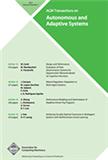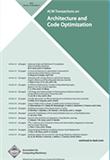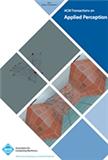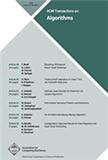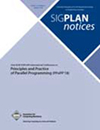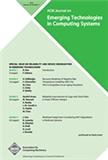CERAMICS INTERNATIONAL
SCI/SCIE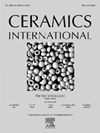
- 雜志名稱:陶瓷國際
- 簡稱:CERAM INT
- 期刊ISSN:0272-8842
- 大類研究方向:工程技術
- 影響因子:3.45
- 數據庫類型:SCI/SCIE
- 是否OA:No
- 出版地:ENGLAND
- 年文章數:2519
- 小類研究方向:工程技術-材料科學:硅酸鹽
- 審稿速度:約1.9個月
- 平均錄用比例:93%
官方網站:http://www.elsevier.com/wps/find/journaldescription.cws_home/405926/description#description
投稿網址:http://ees.elsevier.com/ceri
CERAMICS INTERNATIONAL
英文簡介Ceramics International covers the science of advanced ceramic materials. The journal encourages contributions that demonstrate how an understanding of the basic chemical and physical phenomena may direct materials design and stimulate ideas for new or improved processing techniques, in order to obtain materials with desired structural features and properties.Ceramics International covers oxide and non-oxide ceramics, functional glasses, glass ceramics, amorphous inorganic non-metallic materials (and their combinations with metal and organic materials), in the form of particulates, dense or porous bodies, thin/thick films and laminated, graded and composite structures. Process related topics such as ceramic-ceramic joints or joining ceramics with dissimilar materials, as well as surface finishing and conditioning are also covered. Besides traditional processing techniques, manufacturing routes of interest include innovative procedures benefiting from externally applied stresses, electromagnetic fields and energetic beams, as well as top-down and self-assembly nanotechnology approaches. In addition, the journal welcomes submissions on bio-inspired and bio-enabled materials designs, experimentally validated multi scale modelling and simulation for materials design, and the use of the most advanced chemical and physical characterization techniques of structure, properties and behaviour.Technologically relevant low-dimensional systems are a particular focus of Ceramics International. These include 0, 1 and 2-D nanomaterials (also covering CNTs, graphene and related materials, and diamond-like carbons), their nanocomposites, as well as nano-hybrids and hierarchical multifunctional nanostructures that might integrate molecular, biological and electronic components.Ceramics International is particularly keen to attract papers which deal with fundamental scientific aspects that are relevant to the development of the whole range of advanced ceramics including e.g. phase equilibria and transformations, reactivity, transport processes, thermodynamic and electronic properties, as well as quantum effects in low dimensional materials.Priority materials and areas of interest are:Advanced ceramics and composites for civil, military and industrial applications at room and moderate temperatures- High and ultrahigh temperature structural ceramics and composites for use in extreme environments;Electroceramics such as dielectric and microwave ceramics, ferroelectrics, piezoelectrics, pyroelectrics, thermoelectrics, ferroelastics; magnetic, multiferroic, semiconducting and fast ion-conducting ceramics; high Tc superconductors, topological insulators;Optical ceramics including luminescent and chromogenic materials, transparent conducting and semiconducting ceramics, electro-optical, magneto-optical and laser materials, inorganic optical fibers, plasmonic structures and electromagnetic metamaterials;Ceramics for nuclear fission, fusion and nuclear waste management technologies;Bioinert and bioactive ceramics for the full range of medical applications, including functional nanoparticles, composite materials and hybrid hierarchical nanostructures for tissue engineering, delivery systems, bio imaging and neural interfaces.
CERAMICS INTERNATIONAL
中文簡介陶瓷國際涵蓋了先進陶瓷材料的科學。期刊鼓勵做出貢獻,展示對基本化學和物理現象的理解如何指導材料設計,并激發對新的或改進的加工技術的想法,以獲得具有所需結構特征和性能的材料。國際陶瓷包括氧化物和非氧化物陶瓷、功能玻璃、玻璃陶瓷、非晶無機非金屬材料(及其與金屬和有機材料的組合),其形式為微粒、致密或多孔體、薄膜/厚膜以及層壓、分級和復合結構。還介紹了與工藝有關的主題,如陶瓷接頭或用不同材料連接陶瓷,以及表面處理和調節。除了傳統的加工技術外,感興趣的制造路線還包括從外部施加應力、電磁場和高能束受益的創新程序,以及自上而下和自組裝納米技術方法。此外,期刊歡迎提交關于生物啟發和生物激活材料設計、材料設計的實驗驗證多尺度建模和模擬以及結構、性能和行為的最先進的化學和物理表征技術。與技術相關的低維系統是陶瓷國際的一個特別關注點。其中包括0、1和2-D納米材料(也包括CNT、石墨烯和相關材料,以及類金剛石碳),它們的納米復合材料,以及可能整合分子、生物和電子元件的納米雜化物和分層多功能納米結構。國際陶瓷協會特別熱衷于吸引涉及與整個高級陶瓷領域發展相關的基本科學方面的論文,包括相平衡和轉變、反應性、傳輸過程、熱力學和電子性質,以及低密度下的量子效應。尺寸材料。優先材料和感興趣的領域包括:用于民用、軍事和工業的室溫和中溫高級陶瓷和復合材料-用于極端環境的高溫和超高溫結構陶瓷和復合材料;介電陶瓷、微波陶瓷、鐵電、壓電、熱電、鐵電彈性材料等電陶瓷;磁性、多鐵性、半導體、快離子導電陶瓷;高溫超導體、拓撲絕緣體;光學陶瓷,包括發光和顯色材料、透明導電和半導體陶瓷、電光、磁光和激光材料、無機光纖、等離子體結構和電磁超材料;核裂變、核聚變和核廢料管理技術用陶瓷;生物惰性和生物活性陶瓷,廣泛應用于醫療領域,包括功能性納米顆粒、復合材料和用于組織工程、輸送系統、生物成像和神經接口的混合層次納米結構。
CERAMICS INTERNATIONAL
中科院分區| 大類學科 | 分區 | 小類學科 | 分區 | Top期刊 | 綜述期刊 |
| 材料科學 | 2區 | MATERIALS SCIENCE, CERAMICS 材料科學:硅酸鹽 | 1區 | 是 | 否 |
CERAMICS INTERNATIONAL
JCR分區| JCR分區等級 | JCR所屬學科 | 分區 | 影響因子 |
| Q1 | MATERIALS SCIENCE, CERAMICS | Q1 | 5.532 |
CERAMICS INTERNATIONAL
中科院JCR分區歷年趨勢圖CERAMICS INTERNATIONAL
影響因子精選同類領域期刊,熱門推薦輕松get~
-
- ACM Transactions on Autonomous and Adaptive Systems
- 期刊ISSN:1556-4665
- 大類研究方向:工程技術
- 影響因子:
- 數據庫類型:SCIE
- 咨詢投稿
-
- ACM Transactions on Architecture and Code Optimization
- 期刊ISSN:1544-3566
- 大類研究方向:工程技術
- 影響因子:1.444
- 數據庫類型:SCIE
- 咨詢投稿
-
- ACM Transactions on Applied Perception
- 期刊ISSN:1544-3558
- 大類研究方向:工程技術
- 影響因子:
- 數據庫類型:SCIE
- 咨詢投稿
-
- ACM Transactions on Algorithms
- 期刊ISSN:1549-6325
- 大類研究方向:工程技術
- 影響因子:
- 數據庫類型:SCIE
- 咨詢投稿
-
- ACM SIGPLAN NOTICES
- 期刊ISSN:0362-1340
- 大類研究方向:工程技術
- 影響因子:
- 數據庫類型:
- 咨詢投稿
-
- ACM Journal on Emerging Technologies in Computing Systems
- 期刊ISSN:1550-4832
- 大類研究方向:工程技術
- 影響因子:2.013
- 數據庫類型:SCIE
- 咨詢投稿
精選常見問題,答疑解惑輕松get~
- 三篇ssci論文怎么同時投出去
- 中文核心和sci哪個影響力更大
- 中科院一區和JCR一區期刊占比區別
- 發ssci如何快速找合適的期刊
- 資源保護方面論文投sci指導
- 外貿行業論文發ssci周期長嗎
- 國外的sci投到錄用一般多久
- ssci期刊國內認可度
- 核能應用論文翻譯英文發sci容易的方法
- 人口老齡化研究論文符合ssci領域嗎
- sci開源和不開源分別是什么意思?有什么影響?
- ssci發表是高水平學術論文嗎
- 生態修復主題英文論文會收錄哪些數據庫
- 哲學專業論文發英文期刊
- 中科院sci四個區的劃分
- ssci期刊和sci期刊的區別
- ESCI和SCIE要分清
- ssci送審論文多久出結果
- ssci論文二作有用嗎
- 水土保持類英文期刊好選嗎
- ssci期刊論文一定會檢索嗎
 投稿咨詢
投稿咨詢

